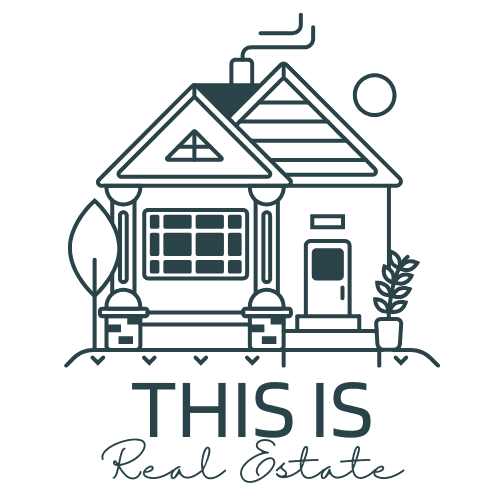Staying professional and friendly with real estate clients requires effective communication and relationship-building. Start by using a mix of communication methods like texts for quick updates, phone calls for detailed discussions, and emails for sharing important documents. Tailor your approach to client preferences, showing respect and understanding. Build trust by being transparent and reliable, responding to inquiries promptly, and maintaining ethical standards. Engage with clients regularly through both digital tools and personal interactions, such as thank-you notes and community involvement. Show genuine interest in their needs and offer personalized services that enhance their experience. Discover more strategies to refine these interactions seamlessly.
Key Takeaways
- Maintain clear and honest communication to build trust and credibility with clients.
- Demonstrate genuine interest and active listening to make clients feel valued and understood.
- Adapt communication methods to match client preferences, ensuring comfort and rapport.
- Uphold professional integrity by being reliable and transparent in all interactions.
- Use thank you notes and personalized gestures to enhance client satisfaction and loyalty.
Effective Communication Methods

When working with real estate clients, it’s essential to choose the right communication method to meet their preferences and needs. Younger clients often prefer texts for quick, skimmable updates, making it a great way to keep them informed without overwhelming them. For more personal or detailed conversations, especially with senior clients, phone calls are invaluable. They allow for nuanced discussion and a personal touch that’s sometimes lost in written communication. Emails, on the other hand, serve as the perfect medium for formal exchanges and sharing important documents, ensuring everything is documented and easily retrievable. In-person meetings, while more time-consuming, are unmatched for building rapport and handling significant discussions. They allow you to read body language and address concerns on the spot, fostering trust and understanding. It’s vital to adapt to each client’s preferences, ensuring they feel heard and respected. Proactive communication enhances client relationships, as frequent phone interactions are essential for maintaining service quality. By doing so, you demonstrate professionalism and commitment to providing exceptional service. Whether you’re sending a quick text or setting up a face-to-face meeting, always aim to match your communication style with the client’s needs, ensuring a smooth and effective interaction throughout the real estate process. Strong communication skills are essential throughout the real estate process, from consultations to negotiations, as they build trust and transparency with clients.
Building Strong Client Relationships
A solid client relationship is the backbone of successful real estate transactions. By building trust and credibility, you create a foundation that encourages repeat business and referrals. Start by showcasing your expertise; offer valuable insights and advice to demonstrate your industry knowledge. Transparency is key, so always provide clear, honest information about the buying or selling process. Here’s how you can strengthen client relationships effectively:
- Demonstrate Expertise: Share your industry knowledge to build credibility.
- Be Transparent and Honest: Maintain trust by being open about processes.
- Stay Reliable and Responsive: Respond promptly to inquiries and be available when needed. Automation tools can enhance communication efficiency and ensure timely follow-ups with clients through CRM systems.
- Maintain Professional Integrity: Uphold ethical standards and guarantee confidentiality.
Personalized client experiences also play an essential role. Practice active listening to truly understand your clients’ needs and adapt your communication style accordingly. Small gestures, like thank you notes or personalized property tours, can create memorable experiences. Encourage client feedback and use it to tailor your services. Regular updates are essential for transparency, keeping clients informed throughout the process and ensuring they feel involved. Recognizing clients’ real estate needs and financial expectations helps in providing tailored advice and solutions.
Furthermore, maintaining relationships involves regular check-ins and personalized touches, such as handwritten notes. Engage with clients through social media and participate in community activities to foster deeper connections. Such efforts not only retain clients but also encourage referrals, driving long-term growth.
Proactive Communication Strategies

In real estate, proactive communication strategies are essential for fostering strong client relationships. By offering clear and consistent communication, you guarantee transparency through regular updates on property statuses and market trends, keeping clients well-informed. Utilize multiple channels such as emails, phone calls, and in-person meetings to maintain open lines of communication, and respond promptly to inquiries. Setting clear expectations early on demonstrates your commitment and reliability, while regular follow-ups help you stay connected and keep clients updated. Effective communication is especially critical for understanding client needs and preferences, facilitating quicker deal closures through coordination.
Personalized communication is key to making clients feel valued. Tailor your approach to fit each client’s unique needs and preferences, understanding whether they prefer emails or phone calls. Adding personal touches, like mentioning recent life events, can strengthen client rapport. Provide customized information based on individual client needs, and use their feedback to refine your strategies. Genuine interactions foster trust and rapport with clients, and expressing gratitude enhances positive outcomes in conversations.
Leveraging digital tools enhances your communication efficiency. Utilize digital platforms to share relevant information and engage clients via social media. Maintain email lists for regular contact, and use data-driven insights to personalize communication. CRM tools help track client interactions, allowing you to tailor communication effectively. These strategies demonstrate your expertise and care, building trust and credibility with clients.
Client Interaction Techniques
Building on proactive communication strategies, effective client interaction techniques elevate your real estate practice by fostering deeper connections with clients. To achieve this, it’s vital to employ methods that not only convey professionalism but also demonstrate genuine interest and care. Consider the following techniques to enhance your client interactions:
- Convey Genuine Interest: Ask open-ended questions about their backgrounds, families, hobbies, and aspirations. This shows you’re truly invested in understanding your clients as individuals, not just customers. Establishing trust is essential for a positive client experience, and by relating to clients’ feelings, you can strengthen trust and rapport, making your interactions more meaningful. Additionally, leveraging AI-driven content creation can help in personalizing your communication, enhancing overall client satisfaction.
- Active Listening: Provide your undivided attention during conversations. Maintain eye contact, nod to show understanding, and ask relevant questions, guaranteeing your clients feel heard and valued.
- Tailor Communication Styles: Adapt your communication to match your clients’ styles by noticing their verbal and non-verbal cues. This guarantees they feel comfortable and understood during your interactions.
- Be Authentic: Let your personality shine through in all interactions. Avoid sounding scripted, as authenticity builds trust and rapport, essential for long-term client relationships. Recognizing patterns in client interactions can also help you better tailor your approach, ensuring that each client feels uniquely understood and valued.
Utilizing Technology Effectively

Technology plays an essential role in elevating your real estate practice, offering tools that streamline client interactions and boost efficiency. By leveraging CRM tools, you can efficiently manage client information, automate follow-ups, and track tasks and deadlines. This guarantees that no vital detail slips through the cracks, providing you the ability to analyze client data for personalized property recommendations. It’s important to integrate CRM tools with other real estate technologies for a seamless workflow.
Transaction management systems further enhance your practice by guaranteeing compliance and accuracy. With digital signatures and customizable templates, paperwork becomes less burdensome, and digital signature tools can expedite the closing process. Integrate these systems with your CRM for a more streamlined process, creating task lists and reminders to keep everything on track. Essential tech tools for REALTORS® include not only CRM systems and transaction management tools but also data analytics tools for informed decision-making and strategy. The use of mobile apps allows agents to communicate with clients on-the-go, enhancing flexibility and maintaining professionalism.
Virtual and scheduling tools also play a significant role. Virtual tours enhance property listings, attracting more views and potentially reaching a global audience. Scheduling tools simplify appointment bookings and send automated reminders, reducing no-shows and saving you time.
Incorporating digital documentation and feedback tools can enhance efficiency by reducing paperwork and improving client experiences. Utilize secure digital faxing, electronic storage, and customer feedback tools to manage documents and gather insights, guaranteeing your practice remains professional and client-focused.
Maintaining Professionalism
To maintain professionalism in real estate, start by ensuring your communication is clear and direct. This approach minimizes misunderstandings and shows respect for your client’s time. Here’s how you can achieve this:
- Clear Messages: Craft straightforward messages to prevent any confusion or misinterpretation that might derail your interactions.
- Directness: Being direct not only saves time but also demonstrates your commitment to transparency and efficiency.
- Consistent Tone: Use a professional tone across all communication channels, ensuring consistency whether you’re emailing, calling, or meeting in person.
- Timely Updates: Regularly update your clients on their transaction’s progress to keep them informed and engaged throughout the process.
Active listening is also vital. By paying close attention to both verbal and non-verbal cues, you can better understand your client’s needs. Ask clarifying questions to confirm your understanding and avoid potential missteps.
Furthermore, choose appropriate communication channels that suit your client’s preferences. Whether it’s a phone call or email, use formal language and clear formatting to convey your message effectively. Prompt responses show you’re attentive and committed, while maintaining professional etiquette fosters trust and respect. These practices help you build a lasting professional relationship based on trust and reliability.
Adapting to Client Preferences

While maintaining professionalism is crucial, adapting to client preferences can greatly enhance your relationship and service efficiency. Understanding what clients need begins with leveraging data to grasp their preferences and communication styles. Immerse yourself in their behavioral patterns to tailor your strategies accordingly. This approach not only respects their needs but also promotes transparency in your interactions. Encouraging open communication is essential, so utilize various channels that your clients are comfortable with. Technology can be your ally here, streamlining communication efforts and making it easier to stay connected.
Customizing client experiences is another important step. Personalized marketing can make a significant difference, so align your strategies with individual preferences. This might include targeted emails and customized property recommendations that cater to their specific interests. Share relevant market updates in a timely manner, and always endeavor to provide personalized service. By doing so, you’re not just meeting their needs but fostering a long-lasting relationship built on trust and understanding.
- Prepare for Loan Maturities and Refinancing Waves as a Real Estate AgentIn mastering loan maturities and refinancing waves, uncover strategies every real estate agent needs to empower clients during pivotal financial transitions.
Ensuring Clear and Timely Responses
Effective communication frequently serves as the backbone of successful real estate transactions. Guaranteeing clear and timely responses is vital for building trust and maintaining strong client relationships. By using multiple communication channels, you can tailor your approach based on client preferences and the nature of the information. Here are some strategies to take into account:
- Utilize Multiple Channels: Mix phone calls, emails, texts, and in-person meetings to suit different situations and client needs.
- Clear and Concise Messages: Craft messages that are straightforward and jargon-free to prevent misunderstandings.
- Immediate Response: Respond promptly to initial inquiries to show clients that you’re attentive and dedicated to their needs.
- Regular Scheduling Updates: Schedule regular check-ins to keep clients informed about progress and address any questions.
Active listening is essential; it helps you understand clients’ needs and provides thoughtful responses, demonstrating empathy and engagement. Utilize autoresponders for immediate acknowledgment of client inquiries, setting expectations for more detailed follow-ups. Be flexible with your communication schedules, accommodating those with non-traditional availability. Consistent follow-ups guarantee clients feel valued, fostering long-term professional relationships. Use technology, such as CRM systems and scheduling tools, to streamline and enhance your communication efforts, ultimately guaranteeing a seamless client experience.
Enhancing Client Experience

As you master clear and timely communication, elevating your clients’ experiences becomes your next focus. Creating personalized experiences is key, and you can start by tailoring presentations using tools like Display Presenter to align with individual client preferences. Offer 3D digital tours of off-plan developments, allowing clients to explore unique features and layouts. High-quality visuals are essential for showcasing the luxury and quality of properties, making them more appealing. By analyzing data from customer interactions, you can pinpoint popular features and areas needing refinement, enhancing your sales strategies.
To leverage technology effectively, incorporate virtual tours to provide convenience for remote buyers. CRM systems help manage client data and automate follow-ups, ensuring no lead goes unnoticed. Real estate apps streamline property management and client communication, while AI-driven chatbots offer instant responses to inquiries. Expedite contracts with digital document signing tools, which enable secure, remote signing. Additionally, using video marketing tools can enhance your property listings and engage potential buyers more effectively.
Building long-term relationships involves thoughtful gestures, like personalized notes or market updates. Engage with communities through local events, increasing brand visibility. These strategies, combined with active listening and transparency, will greatly enhance your clients’ experience, fostering trust and satisfaction.
Recent Posts

Digital Signature Tools: Streamlining Real Estate Transactions

How to Build a Real Estate Referral Network
Frequently Asked Questions
How Do I Handle a Client Who Is Consistently Late for Meetings?
When dealing with a client who’s consistently late, start by documenting their tardiness to spot patterns. Directly but kindly discuss the issue, exploring any underlying reasons. Suggest solutions like earlier meeting times or virtual alternatives. Always confirm meetings ahead, send reminders, and plan routes with the client. Maintain professionalism by staying calm, using wait time productively, and warmly greeting them to quickly refocus the meeting on key objectives.
What Is the Best Way to Deal With Difficult Clients?
When faced with difficult clients, think of Odysseus steering through troubled waters. You should practice clear communication and active listening to understand their needs fully. Be empathetic, adapting your communication style to match theirs while maintaining a professional tone. Transparency and honesty build trust, so keep them informed, even with bad news. Set clear expectations, provide proactive updates, and solve conflicts calmly. Reliability and responsiveness will guarantee smoother interactions and foster client satisfaction.
How Can I Manage Stress When Dealing With Multiple Clients?
You can manage stress effectively by utilizing automated systems and organizational tools. Implement CRM software to streamline interactions, automate tasks, and maintain a centralized client database. Prioritize leads using lead management tools and allocate time efficiently with calendar integrations. Regularly use CRM analytics for insights into client engagement, which helps refine your approach. By automating follow-ups and maintaining a structured schedule, you’ll reduce stress and handle multiple clients smoothly.
What Should I Do if a Client Refuses to Follow My Advice?
When a client refuses to follow your advice, first, make certain that you’ve clearly communicated your reasoning, using data and statistics to support your recommendations. Listen actively to their concerns, ask open-ended questions to understand their perspective, and consider alternative solutions that align with their goals. Build trust by demonstrating empathy and transparency about potential risks. Highlight the benefits of your strategy, but stay open to negotiation and compromise to reach a mutual understanding.
How Do I Maintain a Work-Life Balance as a Real Estate Agent?
To maintain a work-life balance as a real estate agent, don’t burn the candle at both ends. Identify your peak productivity hours and align essential tasks accordingly. Utilize scheduling tools to block out personal time, ensuring you take breaks and recharge. Set clear boundaries by establishing specific work hours, then stick to them. Prioritize tasks weekly, designating non-work time for hobbies and family. Remember, personal well-being is as important as professional success.
Bottom Line
To thrive in real estate, you must communicate effectively, build strong relationships, and adapt to client preferences. Utilize technology wisely, guarantee clear and timely responses, and maintain professionalism at all times. By being proactive in your communication strategies and enhancing the client experience, you can foster trust and loyalty. Remember, every interaction is an opportunity to strengthen your connection, demonstrate your expertise, and contribute positively to your community. Stay friendly, stay professional, and success will follow.







